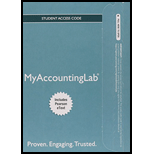
1.
Trading Investments:
Trading investments are the investments in debt or equity securities where the investor holds less than 20% of the voting stock. The investor wishes to sell these investments at a short notice like in a few days, week, or months to generate some profit out of it. They are treated as current assets.
Available-for-sale investments:
Available-for-sale investments are the investments in debt or equity securities, where the investor wishes to holds less than 20% of voting stock, and neither referred as trading or hold-to-maturity investments. For debt securities, the investor do not wish to hold it till maturity, and hence reported either as current assets or as long-term assets in the
Unrealized-gain or Unrealized-loss:
Unrealized-holding gain or loss occurs when the investor company record the investments at its fair value, in its financial statements, without disposing (selling) them. When the cost of the investment is lesser than the fair value of the investment, then it is unrealized-gain. On the contrary, when the cost of the investment is greater than the fair value of the investment, then it is unrealized-loss.
To list out: The classifications of debt and/or equity security investments do the Corporation S hold.
2.
To give: The breakdown of the short-term and long-term investments of Corporation S held at September 29, 2013.
3.
To identify: Each item related to the company’s debt and equity security investments, the amount of the item, and the section of the
4.
To identify: The way in which Corporation S’s available-for-sale investments and trading investments reported.
Want to see the full answer?
Check out a sample textbook solution
Chapter 10 Solutions
MyLab Accounting with Pearson eText -- Access Card -- for Horngren's Financial & Managerial Accounting (My AccountingLab)
- Suppose Harbor view Hotel has annual fixed costs applicable to its rooms of $2.5 million for its 350-room hotel. Average daily room rents are $60 per room, and average variable costs are $15 for each room rented. It operates 365 days per year. If the hotel is completely full throughout the year, what is the net income for one year? Don't Use Aiarrow_forwardHi experts please answer the financial accounting questionarrow_forwardRIO is a retailer of smart televisions. Typically, the company purchases atelevision for $1,200 and sells it for $1,500. What is the gross profit margin on this television?arrow_forward
- The CV Company has just purchased $75,000,000 of plant and equipment that has an estimated useful life of 20 years. The expected salvage value at the end of 20 years is $7,500,000. What will the book value of this purchase (excluding all other plant and equipment) be after its fifth year of use?arrow_forwardI want to correct answer general accounting questionarrow_forwardQuestion: Mr. R bought a machine for Rs 25,000 on which he spent Rs 5,000 for carriage and freight; Rs 1,000 for brokerage of the middleman; Rs 3,500 for installation and Rs 500 for an iron pad. The machine is depreciated @ 10% every year on a written down basis. After three years the machine was sold to Mr. B for Rs 30,500 and Rs 500 was paid as commission to the broker. Find out the profit or loss on the sale of the machine. Please help mearrow_forward
- Home Insert Share Formulas Data Review View Help Draw 910 " Calibri (Body) 11 AABU DAVA = Wrap Merge v General B75 vxvfx Common stock - Netspeed D E A B 52 QuickPort's share of NetSpeed's dividends 53 Balance 12/31/2024 54 56 57 58 59 60 55 b. Prepare the worksheet adjustments for the December 31, 2024 consolidation of QuickPort and NetSpeed. TA Account Title Investment in Netspeed Equipment Accumulated depreciation 61 S Common stock - Netspeed 62 63 64 65 A 66 67 68 69 70 D 71 E 72 73 ED 74 Retained earnings - Netspeed Investment in Netspeed Amortization expense Database Investment in Netspeed Amortization expense Equity in earnings of Netspeed Investment in Netspeed Investment in Netspeed Dividends declared Equity in earnings of Netspeed Equipment Noncontrolling interest Common stock - Netspeed 75 76 77 78 Debit Credit 79 Students: The scratchpad area is for you to do any additional work you need to solve this question or can be used to show your work. 80 Nothing in this area will be…arrow_forwardPlease give me true answer this financial accounting questionarrow_forward?arrow_forward
- What is the budgeted cost for the direct materialsarrow_forwardPinehill Inc. has annual fixed costs of $150,000 and variable costs of $4 per unit. Each unit is sold for $20, and the company expects to sell 15,000 units this year. Compute the operating profit (or loss) if the sales price decreases by 25%.arrow_forwardHi expert please give me answer general accounting questionarrow_forward
 Financial AccountingAccountingISBN:9781337272124Author:Carl Warren, James M. Reeve, Jonathan DuchacPublisher:Cengage Learning
Financial AccountingAccountingISBN:9781337272124Author:Carl Warren, James M. Reeve, Jonathan DuchacPublisher:Cengage Learning Cornerstones of Financial AccountingAccountingISBN:9781337690881Author:Jay Rich, Jeff JonesPublisher:Cengage Learning
Cornerstones of Financial AccountingAccountingISBN:9781337690881Author:Jay Rich, Jeff JonesPublisher:Cengage Learning Intermediate Accounting: Reporting And AnalysisAccountingISBN:9781337788281Author:James M. Wahlen, Jefferson P. Jones, Donald PagachPublisher:Cengage Learning
Intermediate Accounting: Reporting And AnalysisAccountingISBN:9781337788281Author:James M. Wahlen, Jefferson P. Jones, Donald PagachPublisher:Cengage Learning Managerial Accounting: The Cornerstone of Busines...AccountingISBN:9781337115773Author:Maryanne M. Mowen, Don R. Hansen, Dan L. HeitgerPublisher:Cengage Learning
Managerial Accounting: The Cornerstone of Busines...AccountingISBN:9781337115773Author:Maryanne M. Mowen, Don R. Hansen, Dan L. HeitgerPublisher:Cengage Learning Financial Accounting: The Impact on Decision Make...AccountingISBN:9781305654174Author:Gary A. Porter, Curtis L. NortonPublisher:Cengage Learning
Financial Accounting: The Impact on Decision Make...AccountingISBN:9781305654174Author:Gary A. Porter, Curtis L. NortonPublisher:Cengage Learning Managerial AccountingAccountingISBN:9781337912020Author:Carl Warren, Ph.d. Cma William B. TaylerPublisher:South-Western College Pub
Managerial AccountingAccountingISBN:9781337912020Author:Carl Warren, Ph.d. Cma William B. TaylerPublisher:South-Western College Pub





